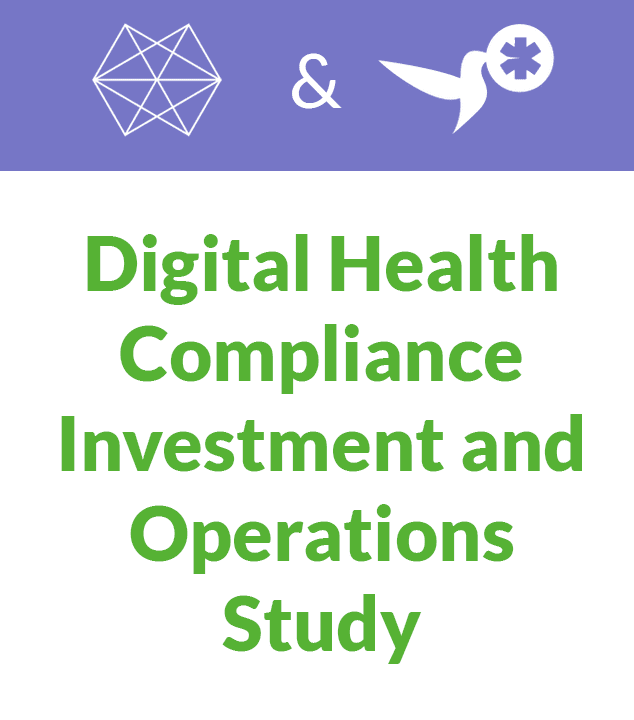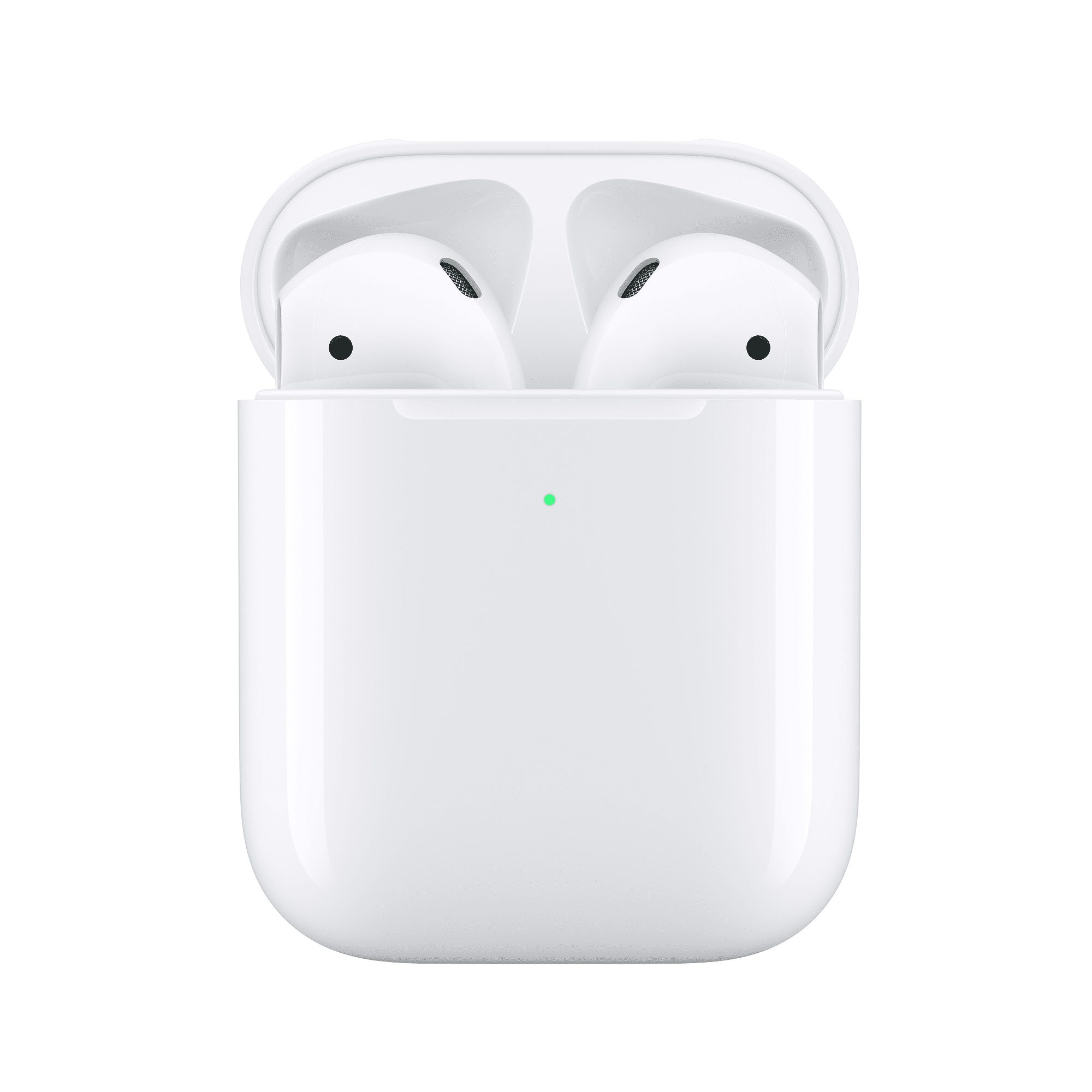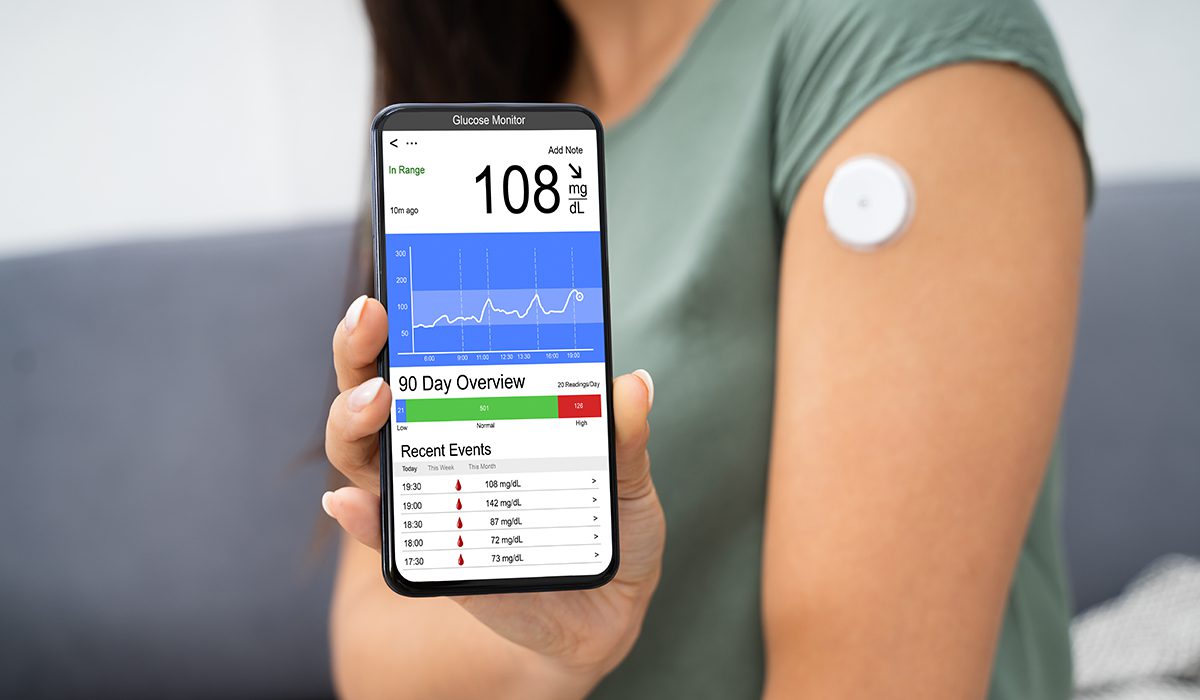
Article
Studying Compliance Burden to Improve SaMD Development
After This Pandemic, What’s in Store for MedTech, Connected Mobile Medical Devices (CMMD) and Software as a Medical Device (SaMD)?
This article picks up where we left off with our blog post, What This Pandemic Has Changed for Digital Health, MedTech, Connected Mobile Medical Devices (CMMD) and Software as a Medical Device (SaMD).
At some point in the future, things will get back to normal.[1] Restaurants, schools, hairdressers, offices, and swimming pools will reopen without social distancing constraints. People will gradually feel safer around others and will return to hugs and (maybe) handshakes. This probably won’t be a linear path. We should expect setbacks along the way such as echo waves of COVID-19 infections and a frustrating wait for the scientific process of trial and error to yield safe and effective vaccines and treatments.
When we do get back to normal, it will be a New Normal and not the Normal of January 1, 2020. A recent article in The Economist makes a compelling argument that the New Normal will by and large reflect an acceleration of trends already underway in the Old Normal. Our economy for the coming years may well be defined as the COVID-19 economy. We are also among those who believe that this period will see the continuation of the recently begun Great Acceleration of Digital Health. (We reiterate our offer from our prior blog to make a bet on this prediction to the tune of a pair of good U2 concert tickets for the year 2030.)
As we’ve seen with past major crises, the rapid acceleration of change will slow down over time (or at least begin to feel less rapid). But we do not expect things to simply return to the exact place they were before the crisis began. We will not be able to return some things to their original state, and we may simply choose not to return to other things having now experienced an alternative. We are not in the camp of saying, “Walls have fallen down and will never be rebuilt.” Healthcare is far more complex than the Berlin Wall: it will not come down in a night and stay down forever.
With a lot of foresight, creativity, and flexibility, this shift toward digital health should be an overall change for the better for patients and providers. Ultimately, the success of digital health can be measured against the strategic framework for healthcare transformation, originally named the Triple Aim (#1–3 below). It was later expanded to the Quadruple Aim with the addition of #4 on this list:
Finally, we should expect that those who make significant and innovative contributions toward achieving the Quadruple Aim will be compensated for the value they create. That includes providers, payers, solution builders, and investors.
**
What does this mean for digital health? Basically, the post-COVID-19 world looks like a series of clear road signs that all point toward the need for more digital health that actually addresses the Quadruple Aim. Given the scalable nature of “digital anything,” digital health’s potential for impact and the related potential to build wildly successful businesses providing digital health is enormous. That is not to say that there won’t be lots of digital health efforts and bad ideas that are given a chance and fail. But there will be societal and monetary payoffs for those who can crack this egg.
To that end, those developing successful digital health organizations, products, and services should keep the following key accelerating trends in mind:
1. Our healthcare needs continue to grow, but our wallets can’t keep up.
Demands for healthcare spending will continue to grow. Our population continues to age and require more care as more people grow older than ever before. In addition, we should expect some bump in a need for more invasive treatments since for at least three months, many preventative treatments were paused and proactive screenings for diseases like breast cancer were skipped. This has given diseases a fresh chance to do more damage to our bodies. Without any fact-checking, it seems logical that the junk food consumed during the lockdown, coupled with delayed dental checkups, will lead to a burst of cavity fillings. We know from our own families that it will also lead to orthodontic treatments extending for many more months than planned because periodic visits to adjust the orthodontia have been delayed.
On the flip side, our economy simply cannot continue to spend more and more on healthcare at the expense of everything else. More older Americans and fewer younger ones mean fewer workers paying for more retirees. The COVID-19 economy and this new recession will likely reduce how much GDP we generate to support a huge healthcare system collectively. It will also impact how much many individuals can pay out of pocket for healthcare expenses. Growing healthcare costs are a competitive drag on US employers, and it is not clear if or when the tens of millions of unemployed people who have now lost their employer-subsidized healthcare will get that financial assistance back. Finally, any person or organization carrying a fixed overhead to cover a healthcare infrastructure such as rent, salaries, and expensive machines like MRIs will likely need some time to recover from the sudden and dramatic loss of income this year.
2. Healthcare dollars will continue gravitating to solutions that move the needle on cost and outcomes.
“It wouldn’t bother me so much that America spends 2–4x what other countries do on healthcare if we were actually 2–4x healthier as a result. But we’re not getting that kind of return on investment for the incredible amounts of money we spend on healthcare.”
–Dr. Geraldine McGinty, Assistant Professor of Radiology specializing in Women’s Imaging at Weill Cornell Medical College, Chief Strategy and Contracting Officer at Weill Cornell Physician Organization, and President, American College of Radiology
To her point, if people (and their payors) feel that healthcare costs too much and delivers too little, they are not going to be motivated to spend a larger share of their money on it. Equally important, even if they feel the cost-to-outcome ratio is appropriate or even great, it doesn’t matter if they can’t afford the cost in any situation.
Before the pandemic, there was already pressure on hospital systems to do not just more, but also better, with less. Buyers of expensive healthcare equipment and funders of even more expensive healthcare facilities will likely show far less appetite for capital purchases that promise a 10% improvement in clinical outcomes but, when seen through the lens of comparative effectiveness, cost 20–30% more than what they are intended to replace.
Similarly, some major employers like Amazon and Walmart have given up on looking for better ROI on their employee healthcare spending from their local insurers and providers. They now send employees to top cities for major treatments such as cancer care and heart surgery to ensure consistently high outcomes that justify the costs.
What will attract healthcare spending are solutions that align with value-based reimbursement approaches from payers, employers, and Congress. The continued adoption of pay-for-performance as opposed to fee-for-service will continue to gain favor and change the financial calculus for payers, providers. and patients. Digital health, when done well, can be a great tool for successful value-based care. We’ve already seen some early success stories and have also learned a tremendous amount from numerous promising ideas that fell flat.
The bottom line is that healthcare dollars will be magnetically attracted to digitally enabled solutions that demonstrate measurably improved outcomes and are coupled with lower bills for “parts and labor.”
3. Where we live and work and how we want to access healthcare will change.
Today, would you want to be the CEO at a major academic medical center who just spent hundreds of millions of dollars on a gleaming new outpatient building at your downtown medical campus that consolidates a huge percentage of your revenue-generating employees and also has fantastic amenities, a gorgeous marble lobby, and a two-story waterfall? Anyone in that CEO’s situation is probably having serious heartburn about having a bet that they will fill that building day after day with patients and providers eager for and in need of face-to-face clinic appointments.
While Zoom is not an appropriate substitute for every in-person interaction, both patients and providers will likely want to have more remote interactions due to the convenience, time savings, and reduced risk of infection. In addition, we may begin to see some degree of a “suburban and neighborhood rebirth” as more people work at home instead of commuting to downtown or suburban office buildings.
As a result, the winning healthcare players will be in a position to provide the optimal balance of in-person and remote/virtual care, matching what people want with the latest that technology has to offer. As we have already seen with the sharing economy companies like Uber, Lyft, and Airbnb, software and data enable far more agility with what is offered when and where than large buildings in fixed locations that carry high overhead costs.
Some things to look for might include the following:



4. MedTech product R&D life cycles will be accelerated, powered by digital clinical trials and augmented by real-world data (RWD) and real-world evidence (RWE).
Clinical trials are a method for bringing order and creating structured data that make it possible to analyze the messy interplay of medical solutions, human bodies, and the larger world. But real life does not happen only in the moments when a professional is able to interview or observe or take a biological measurement from a human being. In fact, very little of real-life happens in those moments.
In contrast, connected mobile medical devices (CMMD) and software as a medical device (SaMD) can make the collection of real-world data (RWD) much easier. This, in turn, has the potential to facilitate a steady enhancement of products so that a MedTech firm can launch with a good product and steadily turn it into an even greater product.
Facebook and Google have grown into advertising behemoths because they use data to “know” their user, including the user’s interests, movements, purchasing habits, and social circles. Even more compelling to advertisers, these tech giants know what a user is interested in at a particular moment and sometimes even why. (That’s what we all get as a result of asking Google every question that pops into our mind and sharing with Facebook who in our lives we want to know what about us in real-time.)
People probably won’t love the idea of a Facebook or Google monitoring our bodies in real-time to deliver us more personalized advertisements, such as pushing us a special Gatorade offer as we go on our daily run past a 7/11 market. However, by applying the art and science of digitally tracking people in the real world as they go about their days, there is enormous potential to give us a better understanding of the nuanced interactions between people, their outside worlds, their inner bodies, and the medical solutions that can facilitate health and wellness. The FDA sees the value in this data, and payers are also showing interest in using this data for reimbursement decisions as they continue to look for improved methods to validate better outcomes for lower costs.
By pairing new forms of real-world data/evidence with existing clinical trial data and post-market surveillance data, we hope to see a number of benefits:
For MedTech companies that can evolve to take advantage of RWD/RWE, they will have the ability to generate continuous pipelines of new and enhanced products that deliver value and create profits based on that value. This, in turn, will provide them with a profit flow to provide shareholder dividends and plow even more money back into R&D for additional R&D. This scalable, data-driven product life cycle model is a large part of why Google, Apple, Facebook, and Amazon are able to leverage highly profitable scalability in a way that their competitors often cannot compete with.
5. There will be a growing need for solutions that make up for the growing shortage of physicians
Before COVID-19, we already had a shortage of trained physicians and other providers, as well as a trend line pointing to greater shortages ahead. Unfortunately, this trend may also accelerate as a result of the pandemic. Medical education has gotten more specialized and longer, medical school costs have continued to rise, and physicians’ job satisfaction and perceived quality of life have continued to deteriorate.
To be fair, it is possible that the COVID-19 pandemic will potentially inspire a new generation of highly talented people into medicine. However, that burst of fresh talent will not arrive in time to backfill for the nearer-term impact of COVID-19 burnout.
Coupled with the other trends, fewer physicians will need to do more. So unless physicians’ time can be better leveraged, it is likely that we will continue in a negative reinforcement cycle.
Digital solutions can help fill that gap. We will need more robots (certainly virtual and possibly also physical) to provide physicians with greater leverage. To use a blunt quote from Dr. Lyle Berkowitz, a healthtech entrepreneur, “We will save healthcare by automating and virtualizing the hell out of it.”
6. The digital health genie will be out of the bottle.
As we discussed in our prior blog, at the beginning of 2020, the biggest impediment to digital health adoption was inertia and resistance in a complex healthcare system. Patients, clinicians, healthcare systems, reimbursement, and regulations all needed to change to get faster movement. In a series of rapid movements taken to confront COVID-19, they all have. The longer this pandemic lasts, the harder it will be to simply snap back to older patterns.
While visits to clinics and hospitals will still be necessary for many circumstances, telehealth visits, coupled with remote monitoring and remote therapies, will often be more convenient for patients and providers, and potentially provide better outcomes. To give a simple example, if a doctor was under the weather, they may have previously canceled a full day of clinic appointments. Now, they may still be able to see some patients remotely from their
home office, while only canceling a few appointments to get some additional rest.
There is a famous post-WWI song that spoke about the desire of rural US veterans to experience a more exciting urban life after having seen the major cities of Europe. It was titled How Ya Gonna Keep ’em Down on the Farm (After They’ve Seen Paree)? History may not always repeat itself, but it certainly rhymes a lot.
7. User-centered design for patient (and clinician) engagement will be key.
Once you put all of these things together—the emphasis on real-world evidence and outcomes, and the expectations for more convenient healthcare options, precious physician time, and the eventual subsidence of the pandemic—the ground is certainly fertile for growth in digital health.
But just being digital is not a guarantee of success. In the end, it always comes down to human behavior and human emotions. As we now know from neuroscience, decisions are influenced heavily by emotion and not only logic.
Patients and clinicians, once they expect digital health, will expect it to be as convenient and useful as the rest of their digital lives. If digital health forces them to act a certain way, rather than meeting them where they are and bending itself to their lives, they will likely ignore it or minimize their use of it.
If you have doubts about this, ask anyone with K–12 children about how the sudden transition to online schooling has gone this year in their house. Have the children been able to pay attention to their online-from-home classes the same way they did in their real classrooms? Did their learning suffer? Was the unsupervised access to a laptop or tablet a temptation to multitask and switch between the class and all of the distractions of online communication and entertainment?
The bottom line is that the people who use digital health have to choose to be engaged, and digital health solutions have to create an environment where they make that choice. Patient engagement and clinician engagement are the ultimate showstoppers for successful digital health. If the premium people pay for the iPhone over the average Android smartphone is any example, people (to the extent that they can afford it) will pay more for a satisfying and functional experience than they will for a purely functional experience.
One final note on this topic: We also know that sometimes people will pay more for a less effective but more satisfying experience than they will for a more effective experience. Many audiophiles have griped to us that the popular but expensive Beats headphones deliver middling-quality audio, but people buy them because they are attractive and have a strong/cool brand appeal.
Health and wellness are too important for us to go down the road of digital health theater, where the products and services consume our time and money but do not actually create better outcomes.
What an engagement-centered model recognizes is that people have to choose to bring their time, attention, and A-game to using healthcare tools. The need for a patient-centered approach to all kinds of healthcare (digital and non-digital) is probably best summed up by the title of Eric Topol’s treatise about connected healthcare: The Patient Will See You Now.
Like industries, the healthcare system is experiencing a rapid infusion of data which is enabling new opportunities. The fire drills caused by COVID-19 have created space for this trend to speed up, and we believe the arc of this trend will have a long way to go even after this pandemic has passed.
In many ways, this is a continuation of what internet pioneer and investor Marc Andreesen described as the new megatrend of “software eating the world.”
“More and more major businesses and industries are being run on software and delivered as online services—from movies to agriculture to national defense. Many of the winners are Silicon Valley-style entrepreneurial technology companies that are invading and overturning established industry structures. Over the next 10 years, I expect many more industries to be disrupted by software, with new world-beating Silicon Valley companies doing the disruption in more cases than not.
Why is this happening now?
Six decades into the computer revolution, four decades since the invention of the microprocessor, and two decades into the rise of the modern Internet, all of the technology required to transform industries through software finally works and can be widely delivered at global scale.”
Andreesen goes on to argue that the global availability of smartphones, high-speed internet access and cloud-based services has combined to create a new baseline for what’s possible to a wide global population. The fusion of these tools has created a ubiquitous platform for conducting the business in new and different ways, all driven by software and data. Companies who can understand this dynamic and can rethink these industries from a data- and software-centric point of view are poised for incredible growth. And for those companies that can’t understand or master this new dynamic miss this wave, Andreesen recalls a cautionary tale of the once-powerful Borders Books and the (now-invincible?) Amazon.com:
“Perhaps the single most dramatic example of this phenomenon of software eating a traditional business is the suicide of Borders and corresponding rise of Amazon. In 2001, Borders agreed to hand over its online business to Amazon under the theory that online book sales were non-strategic and unimportant.
Oops.
Today, the world’s largest bookseller, Amazon, is a software company—its core capability is its amazing software engine for selling virtually everything online, no retail stores necessary. On top of that, while Borders was thrashing in the throes of impending bankruptcy, Amazon rearranged its web site to promote its Kindle digital books over physical books for the first time. Now even the books themselves are software.”
Medical device, diagnostic, and pharmaceutical firms need to take advantage of this acceleration or become a company whose traces can only be found in a handful of vintage listings on eBay.
In our next blog, we will dive into the key factors that help drive successful digital health solutions and how MedTech firms can take advantage of this acceleration? We will talk about some key techniques being used in the MedTech industry and other industries that are experiencing Great Accelerations. Specifically, we will explore how data-driven fast feedback loops are the essential ingredient for moving faster while offering the tools to continually confirm that they are headed not just to any destination point, but to one that is clearly marked as success.
Our favorite inbound messages after a new post do not start with, “Great post. Keep up the good work.” Our favorites are the ones that start with, “I read your post and I disagree when you said x because you are not taking y and z into consideration.”
Our ideas are ultimately strengthened by open, candid conversations. We’d love to hear from you about this blog post and the ones in the pipeline. Do you agree with our take? Disagree? Have questions? Have you read an article that we should read? Feel free to reach out to our CEO, Bernhard Kappe or VP, Solutions & Partnerships, Randy Horton.
In return, we will look for ways to share more blogs, personalized insights, content, and introductions that are highly relevant to your work.
We will continue to dive into the best of what we are reading and hearing about in the industry. Topics we plan to address include the following:
With a strong sense of urgency, Orthogonal is actively developing a point of view of what this pandemic and its aftershocks mean for medical device firms and their innovators creating connected mobile medical devices (CMMD) and software as a medical device (SaMD).
Given the unsettling and largely unexpected acceleration of change in 2020, we see an opportunity to add value to our industry by synthesizing and sharing the best of what we are learning on an ongoing basis. In the end, it’s important that we all succeed because every person in our lives is a customer of healthcare and life sciences.
Orthogonal is a software developer for connected mobile medical devices (CMMD) and software as a medical device (SaMD). We work with change agents who are responsible for digital transformation at medical device and diagnostics manufacturers. These leaders and pioneers need to accelerate their pipeline of product innovation to modernize patient care and gain competitive advantage.
Orthogonal applies deep experience in CMMD/SaMD and the power of fast feedback loops to rapidly develop, successfully launch, and continuously improve connected, compliant products—and we collaborate with our clients to build their own rapid CMMD/SAMD development engines. Over the last eight years, we’ve helped a wide variety of firms develop and bring their regulated/connected devices to market. If you need help building your next CMMD or SaMD, or to learn more, contact us or call us at (866) 882-7215.
**
Bernhard Kappe is Founder and CEO at Orthogonal. You can email him at [email protected]
Randy Horton is VP of Solutions and Partnerships at Orthogonal. You can email him at [email protected]
Footnotes:
Related Posts

Article
Studying Compliance Burden to Improve SaMD Development

Article
Lifestyle Integration for Medical Devices

Article
CEOs and other Digital Health Experts on SaMD in 2020

Article
Looking Back at a Pioneer in DTx and SaMD – Propeller Health in 2013